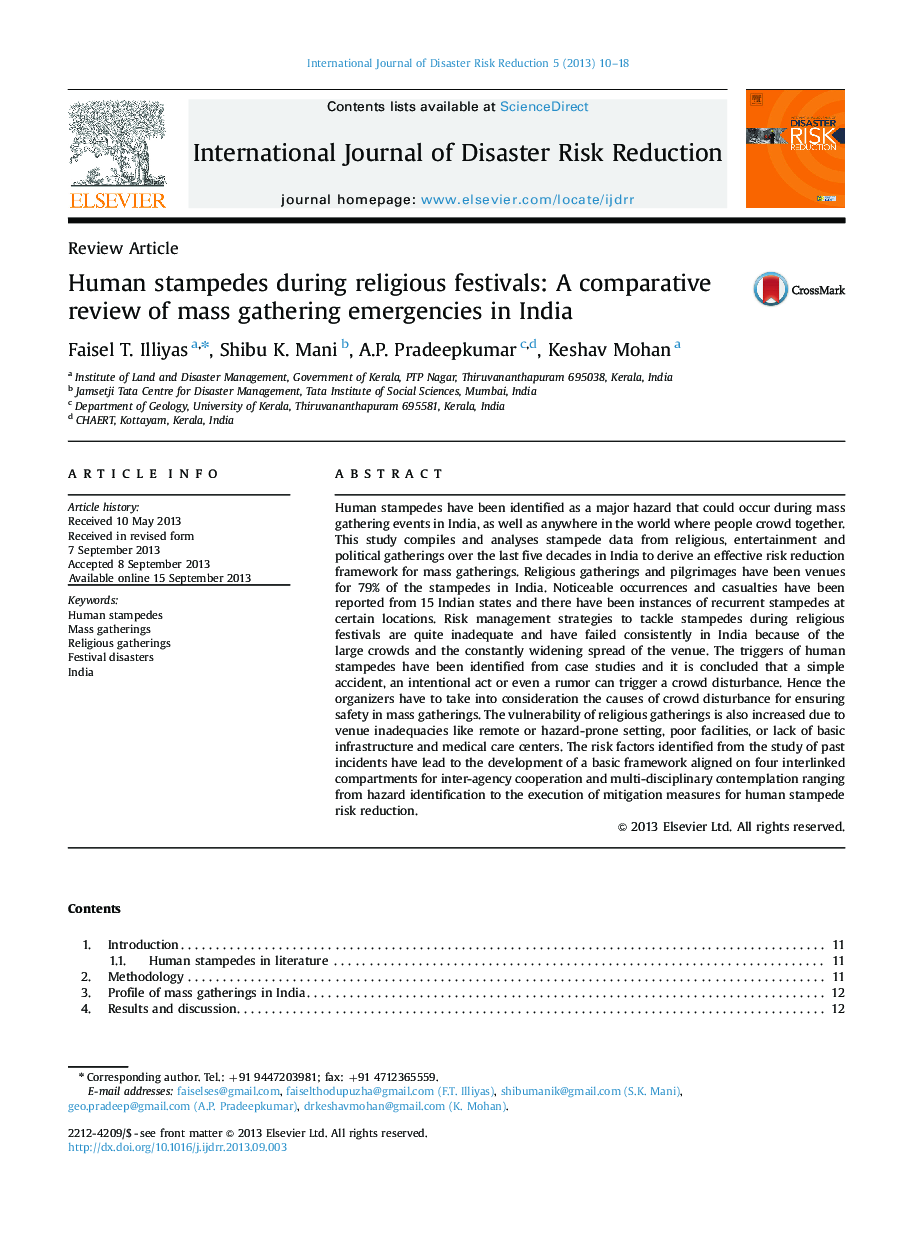| Article ID | Journal | Published Year | Pages | File Type |
|---|---|---|---|---|
| 7473836 | International Journal of Disaster Risk Reduction | 2013 | 9 Pages |
Abstract
Human stampedes have been identified as a major hazard that could occur during mass gathering events in India, as well as anywhere in the world where people crowd together. This study compiles and analyses stampede data from religious, entertainment and political gatherings over the last five decades in India to derive an effective risk reduction framework for mass gatherings. Religious gatherings and pilgrimages have been venues for 79% of the stampedes in India. Noticeable occurrences and casualties have been reported from 15 Indian states and there have been instances of recurrent stampedes at certain locations. Risk management strategies to tackle stampedes during religious festivals are quite inadequate and have failed consistently in India because of the large crowds and the constantly widening spread of the venue. The triggers of human stampedes have been identified from case studies and it is concluded that a simple accident, an intentional act or even a rumor can trigger a crowd disturbance. Hence the organizers have to take into consideration the causes of crowd disturbance for ensuring safety in mass gatherings. The vulnerability of religious gatherings is also increased due to venue inadequacies like remote or hazard-prone setting, poor facilities, or lack of basic infrastructure and medical care centers. The risk factors identified from the study of past incidents have lead to the development of a basic framework aligned on four interlinked compartments for inter-agency cooperation and multi-disciplinary contemplation ranging from hazard identification to the execution of mitigation measures for human stampede risk reduction.
Keywords
Related Topics
Physical Sciences and Engineering
Earth and Planetary Sciences
Geophysics
Authors
Faisel T. Illiyas, Shibu K. Mani, A.P. Pradeepkumar, Keshav Mohan,
